The 45th Boston International Antiquarian Book Fair returns to the Hynes Convention Center in Boston's Back Bay, October 27-29, 2023. (More details here...)
Celebrating its 45th year, this three-day event features fine and rare printed material from around the globe, including illuminated manuscripts, modern first editions, childrens books, ephemera, photographs, maps and autographs, as well as antiquarian books on a vast array of topics brought to you by members of the ABAA and ILAB. Here is a selection of the items our exhibitors will be offering at the Fair...
[GEISSLER, Peter Carl]. Child’s own Book. Kindlein’s Lieblingsbuch. Le favori des enfants. Images indéchirables. Indestructible pictures. Anzerreissbare [sic] Bilder. [Nuremberg, Geissler, c.1840s?]
%2C%20a%20children%E2%80%99s%20book%20illustrator%2C%20began%20publishing%20children%E2%80%99s%20books%20and%20.jpg)
Small 4to (200 × 165 mm), pp. [16]; illustrated throughout, hand-coloured lithographed leaves; original publisher’s illustrated cloth (reproducing the title-page), a few marks.
First edition of quite possibly the first German children’s book to be printed on cloth, thereby making it ‘indestructible’ for giving to small children. Geissler (1802–1872), a children’s book illustrator, began publishing children’s books and ephemera in Nuremberg in 1830. The fact that the title is given in English, German, and French shows he must have had an eye on the export market.
Offered by Simon Beattie Ltd., booth 116.
Reichenbach (Heinrich Gottlieb Ludwig) Album of drawings and watercolours of nocturnal birds, [Dresden], c.1880 An album with 127 fine original illustrations of nocturnal birds, most in watercolour (some pencil sketches) and many heightened with gum Arabic, plus 9 in pencil and 10 pasted engravings (some hand-coloured). ; folio; contemporary quarter coarse-grained green morocco and marbled boards, spine lettered gold; spine sunned.
%20of%20nocturnal%20birds%20-%20Strigiformes%20(owls)%20and%20Caprimulgus%20(nightjars)%20by%20preeminent%20German%20botanist%20and%20ornithol.jpg)
A unique and highly accomplished album of original illustrations of nocturnal birds - Strigiformes (owls) and Caprimulgus (nightjars) - by pre-eminent German naturalist and director of the Dresden Natural History Museum, Heinrich Gottlieb Ludwig Reichenbach (1793-1879).
Reichenbach’s importance to the field of natural history is hard to overstate. A celebrated botanist and ornithologist, he published prolifically, was the founder of the Dresden Botanical Gardens and Zoo, and as the director of the Dresden Natural History Museum he was responsible for numerous curatorial innovations, including being the first to commission Blaschka’s glass models of invertebrates.
The present volume comprises drawings that formed part of Reichenbach’s working library. It is one of a suite of at least ten contiguously bound albums, into which were gathered Reichenbach’s illustrations, and which were produced either towards the end of his life or posthumously. The illustrations were an essential reference tool, as well as the basis for his greatest ornithological work Die Vollständigste Naturgeschichte der Vögel des In- und Auslandes (1845-1862). Although it remained unfinished, Reichenbach’s magnum opus contained more than one thousand illustrations. Notorious for its bibliographical complexity, it was published in a highly disordered manner, in varying formats, with variant title pages, and under evolving classifications. Based on the fullest collation we have found (Zimmer), it appears that a volume on nocturnal birds was never published.
This album, then, is a valuable record of Reichenbach’s work on these birds, with examples from all over the globe. Each illustration is labelled in manuscript with further notes identifying species, dimensions, location and distinctive features. He includes the source of the drawings, and most are from noted ornithological illustrators including Cassin, D’Orbigny, Garnier, and Gould. In many cases Reichenbach has altered and heightened the source image, demonstrating a deft artistry and delicate use of colour. He was a highly accomplished artist (he engraved all one thousand copper plates for his Iconographia Botanica (1823-1832)) and his illustrations in this volume are masterfully executed. These are accompanied by engravings from other authors, which not only give some indication of his working methods and utilisation of existing scholarship, but also demonstrate Reichenbach’s exceptional talent. He was able to leaven the scientific illustrations of his peers into vibrant works of ornithological art.
See: John Todd Zimmer, Catalogue of the Edward E. Ayer Ornithological Library (Field Museum of Natural History, Chicago: 1926), Vol. II., p. 505-514.
Offered by Blackwell's Rare Books, booth 404.
WHITMAN, WALT. Leaves of Grass.
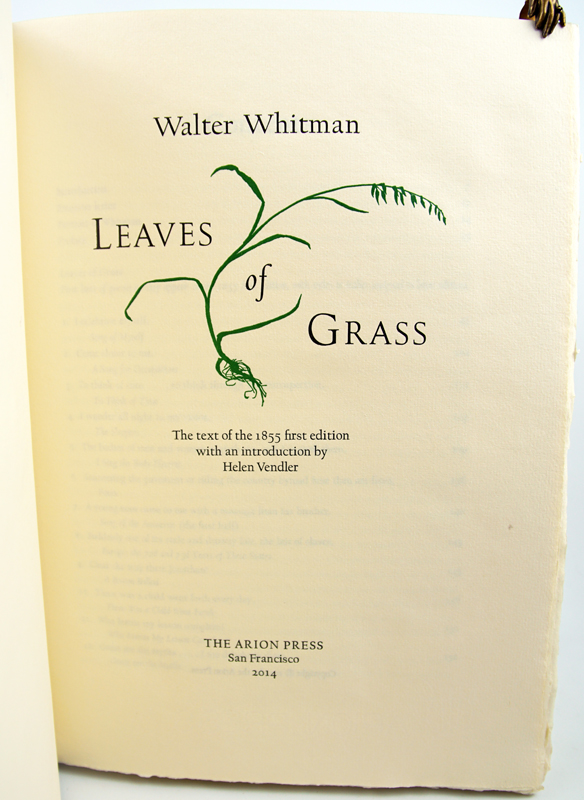
San Francisco , Arion Press, 2014. Small folio. (156)pp. One of 275 copies. With an Introduction by Helen Vendler. For the one hundredth publication of the Arion Press, Andrew Hoyem pays homage to his mentors, Edwin and Robert Grabhorn—whose 1930 edition of Whitman's seminal text is echoed in the present work. But while the text, format and binding pay tribute to the Grabhorn publication, Hoyem takes as his text from the 1855 first edition, from which he also reproduces the engraved frontispiece portrait of the youthful, ambitious poet. The text is set in Californian—a Goudy typeface used in the first publication bearing the Arion Press imprint in 1975 - and printed upon the Thomson Laureate platen press that Hoyem inherited from the Grabhorns, and on which he printed his Moby-Dick in 1978-79. All these elements combined to form the quintessential modern American press book, one that completely sold out upon publication. Fine in gilt stamped green morocco-backed oak veneer boards, and housed in a green cloth slipcase. Prospectus laid in.
Offered by Bromer Booksellers, booth 314.
Tolkien, J.R.R. THE FELLOWSHIP OF THE RING; THE TWO TOWERS; THE RETURN OF THE KING; BEING THE FIRST PART OF THE LORD OF THE RINGS; BEING THE SECOND PART OF THE LORD OF THE RINGS; BEING THE THIRD PART OF THE LORD OF THE RINGS.
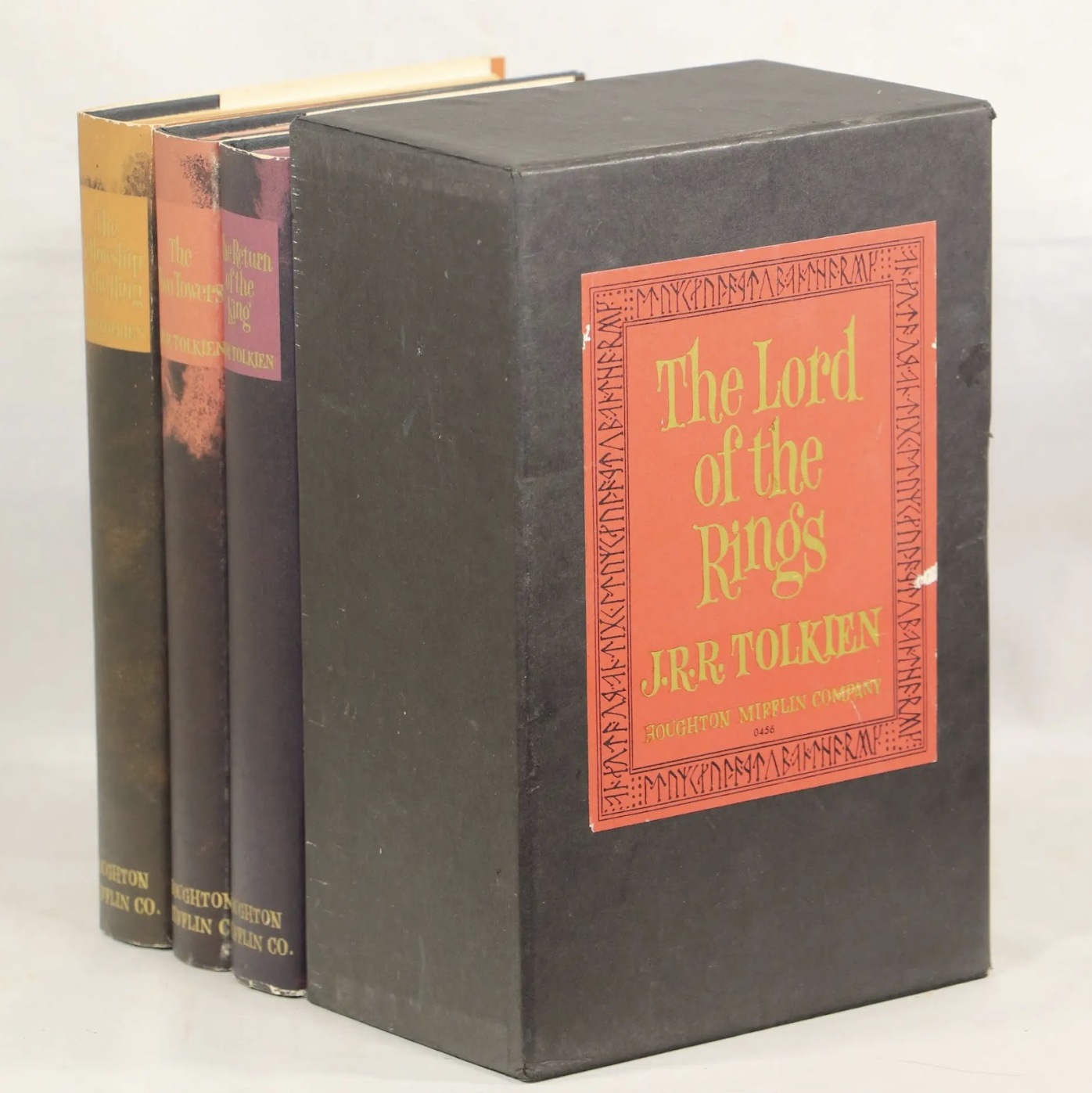
First printings of the second edition of Tolkien's landmark work. One of the earliest works of epic fantasy, Tolkien's series would go on to help shape the next few generations of modern fantasy writers. The world of Middle Earth is beautifully developed in this series concerning friendship, and the power of the natural world against toxic industrialization.
Offered by Evening Star Books, booth 124.
Steinbeck, John. East of Eden
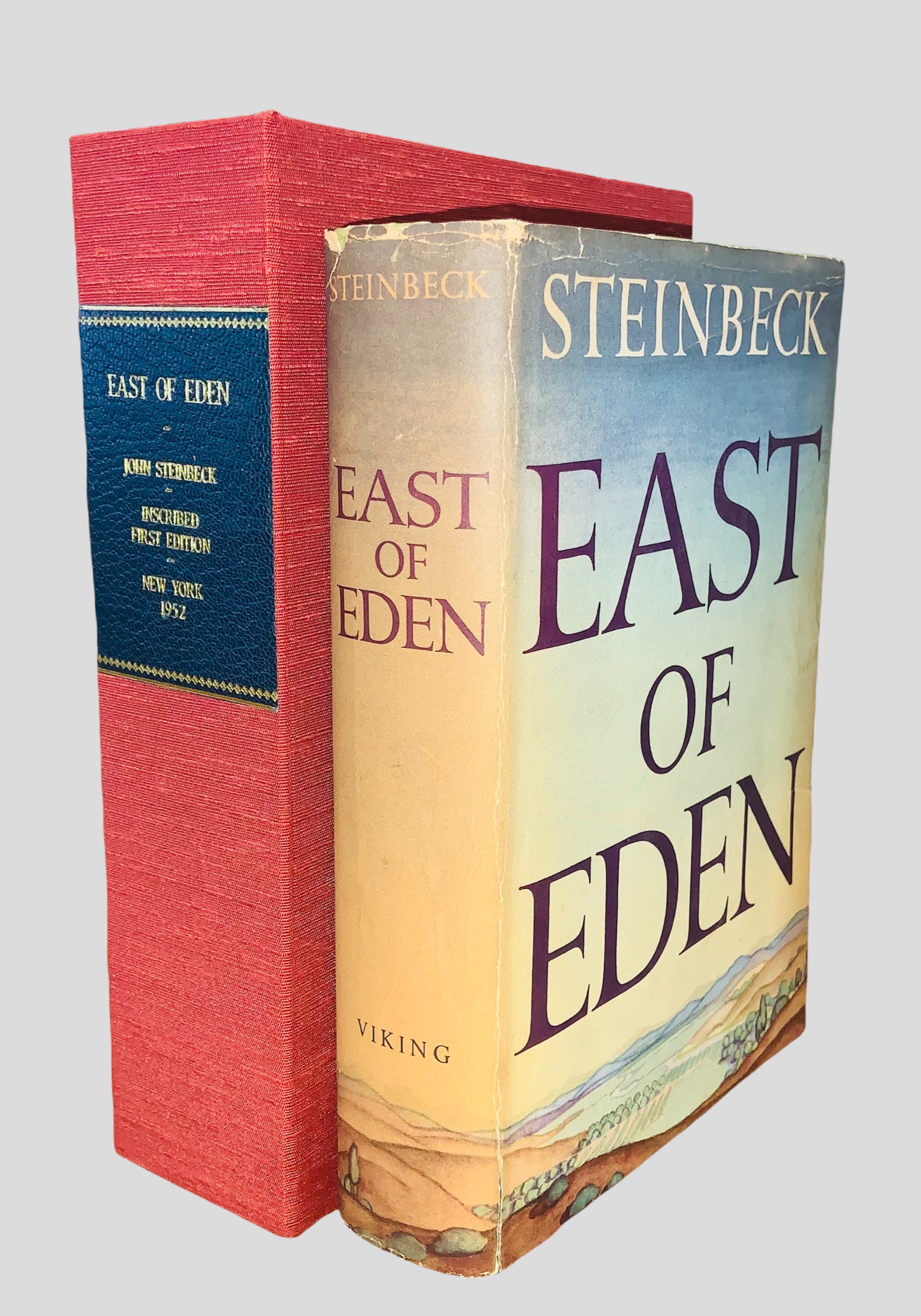
Viking Press, 1952.
First Trade Edition/First Printing with the correct statement to the copyright page and "bite" for "bight" on page 281; A Very Good or better book in a Very Good dust jacket. SIGNED and inscribed by the author to the title page. Housed in a handsome custom clamshell box. An outstanding copy of this seminal novel by one of the great authors in the history of western literature; basis for the fine 1955 film starring James Dean and Jo Van Fleet (academy award winning performance); very scarce in this condition and signed.
Offered by Grayshelf Books, booth 406.
Book of Hours. Germano Hardouyn Librario. 1533
Hore diuine virginis Marie secundum vsum Romanum cum alijs multis folio sequenti notatis vna cum figuris Apocalipsis & destructio Hierusalem & multis figuris, Biblie insertis.
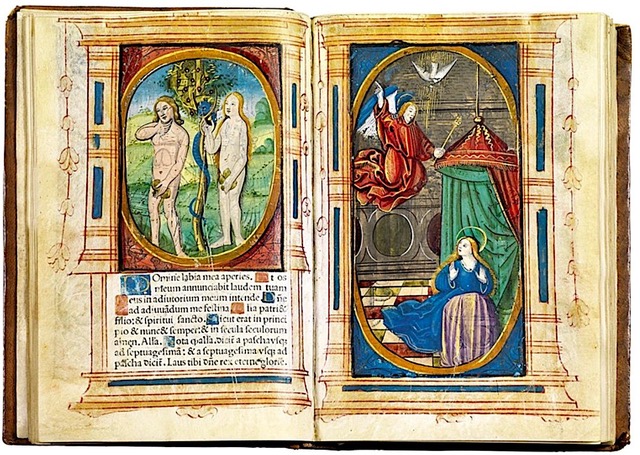
Octavo 155 x 103 mm. Signatures a-m8 ā7 [95] of [96] leaves (lacks the last leaf a8). with 20 [of 21] large illustrations and 12 smaller ones, all finely hand-coloured. -- Marginal tear without losses to E2, in some parts the text is palely crossed out line by line or with vertical or diagonal signs, slightly worn binding and other minor traces of use and time, but overall, a good copy. Germain Hardouyn was a prolific printer, bookseller and publisher active in Paris from 1500 to 1541, initially with his brother Gillet or Gilles.
The two Hardouyns supplied the Parisian market and the provinces with many printed books of hours, publications typical of Paris publishers and printers in the Renaissance: countless editions were produced between 1488 and 1568. The new printing technology in fact, it replaced the long work of copyists and miniaturists, allowing for the creation of multiples that could reach a wider audience. The growing urban middle class was a major buyer of these kinds of books, as beautiful as the precious manuscripts that were created for the noble classes. Although some printed books of hours were left in black and white, many had their illustrations sumptuously hand painted, as in the present case. The artists who colored them were often also active as traditional illuminators, making it difficult to distinguish the illustrations from those found in the manuscripts. Since the two Hardouyns were not only recorded as typesetters but also as illuminators, which is rare in the book trade, their printed books of hours are often exceptionally well painted, closely resembling illuminated manuscripts. The present specimen has a lively and very accurate colouring, illuminated by elegant golden finishes. Dated 1533 on the colophon, it nevertheless bears the almanac for the years 1520-1532 on page A4v. The work opens with the title page, decorated with the large Hardouyn typographical brand, on the reverse of which we find a skeletal Astro/Anatomical Man with four other small miniatures relating to the four medieval temperaments in the corners. The other full or three-quarter page illustrations mostly depict scenes from the life of the Virgin Mary (Annunciation, Nativity, Announcement to the Shepherds, Adoration of the Magi, Presentation in the Temple, Flight into Egypt, Crucifixion, Pentecost), but also biblical scenes such as Adam and Eve with the Serpent under the Tree of Knowledge, and David and Bath-sheba.
Offered by James Gray Bookseller, booth 204.
Illuminated Artist's Book. Mexico. 1 of 12 copies.
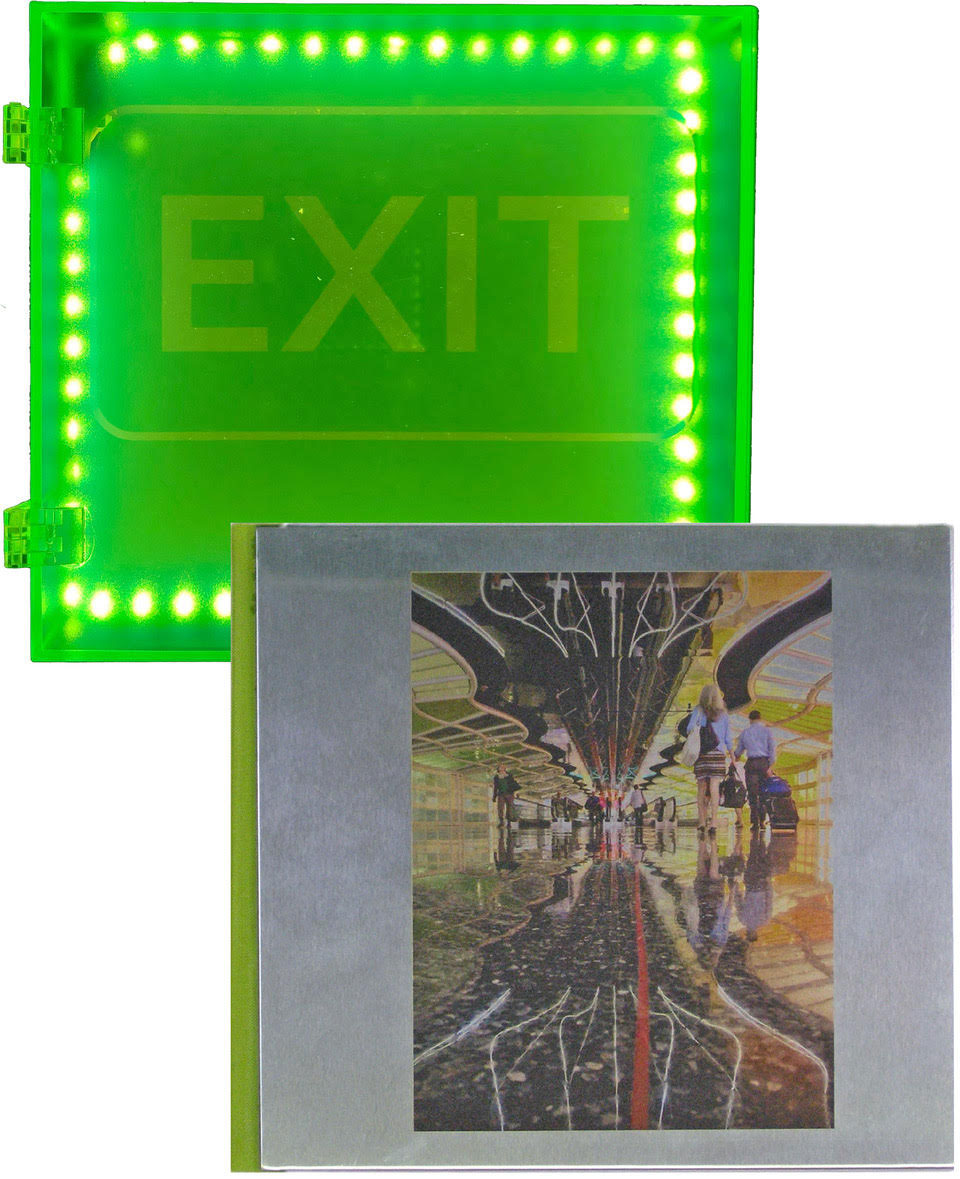
Velazquez, Lorena. EXIT. YO, AQUI, AHORA. México: Bindu Impresion de Arte, 2019. 31 leaves. Illus. with 21 b/w photos of which 7 are double page panoramas, one inset kodachrome slide, five colored translucent sheets, one white lace paper leaf. 20.4 x 22.3 cm. Aluminum boards with inset photo illustration, green cloth spine, in illuminated electronic translucent clamshell display case. First edition. Artists' book. Signed by the author. 1 of 12 copies. Photographs by Lorena Velazquez. Text by Francisco Segovia. Translation by Fionn Petch. Printed by Carme Yael Diaz, Carolina M. Escobar y Francisco Lara on Hahnemuhle 200 gr. paper. Green translucent illuminated box stamped in red made by Corona Display.
Velazquez's briliant creation - a mix of metal and lace paper, photographs and translucent papers, illuminated case- play with the shifting perspective of reality that matches and incorporates Segovia's powerful poem of the coordinates that define our life, our relation to the world, and our death, the three axis that are: I, Here, Now : Yo, aqui, ahora.
Lorena Velázquez is a Franco-Mexican artist, photographer, and book artist with work held by many museums, the Bancroft Library, and the Library of Congress among others. Francisco Segovia is a renowned Mexican poet, essayist and translator. Fionn Petch is a Scottish translator. Each of the ten pages of text contains both the Spanish and English versions. Copies at Brown, Berkeley, Stanford, and Amherst. A fine copy. As new
Offered by Kaaterskill Books, booth 515.
Baring-Gould, Sabine; Cooksey, Gabby [binder]. The Book of Were-wolves [Design Binding].
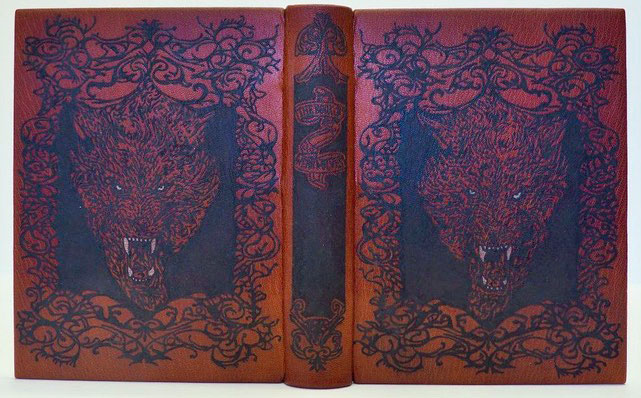
London: Smith, Elder and Co., 1865. First Edition. Rebound, minor foxing on beginning pages and on frontispiece engraving which does not diminish image, former owner signature on two pages, otherwise tight, bright, and unmarred. Bound in red leather with black and white tattooed lettering and decorative elements; includes paste down of original gilt, ornamental spine on rear papers. xi, 8vo., 266 pp, 1 unnumbered leaf of plates, advertisement in rear. Fine. Half Calf.
A survey of the myths and legends concerning lycanthropy from ancient times to the Victorian era. Rev. Sabine Baring-Gould (1834-1924) of Lew Trenchard in Devon, England, was an Anglican priest, hagiographer, antiquarian, novelist, folk song collector and eclectic scholar. His bibliography consists of more than 1240 publications. In one of the most cited texts on lycanthropy, "Baring-Gould treats the phenomenon of the werewolf as a psychological aberration, as essentially a delusional state. Baring-Gould treks into the shadowy world of crimes vaguely connected to werewolves, including serial murders, grave desecration, and cannibalism." (Coleman) The book was formerly owned by Dillon Hampden Carrington (b.1916), supernatural book collector. At first search, no copies of this edition held in US institutions (Worldcat).
Offered by Lux Mentis, Booksellers, booth 304.
Twelve pen-and-ink drawings highlighted with watercolors.
.gif)
Illustrations (arranged according to the months of the years) for a huge late Victorian calendar depicting poor and affluent women, the whole ensemble mounted on two panels (995 x 260 mm each). Depicts the contrasting mis(fortunes) of young Victorian women in London and elsewhere, from the destitute to the exalted. A wordless yet powerful social commentary.
Offered by Michael Laird Rare Books, booth 104.
Quadragesimale Roberti de peccatis [Sermones quadragesimales de peccatis] by Robertus Caracciolus Strassburg: Johann Prüss, 3 December 1490
bound using fragments of Ars Minor by Aelius Donatus
Mainz: Owner of the Type of the 42-Line Bible, ca. 1454-1457
CCCXX, [8] leaves | 8vo | a-z8 [us]8 [con]8 [rum]8 A-P8 | 175 x 113 mm
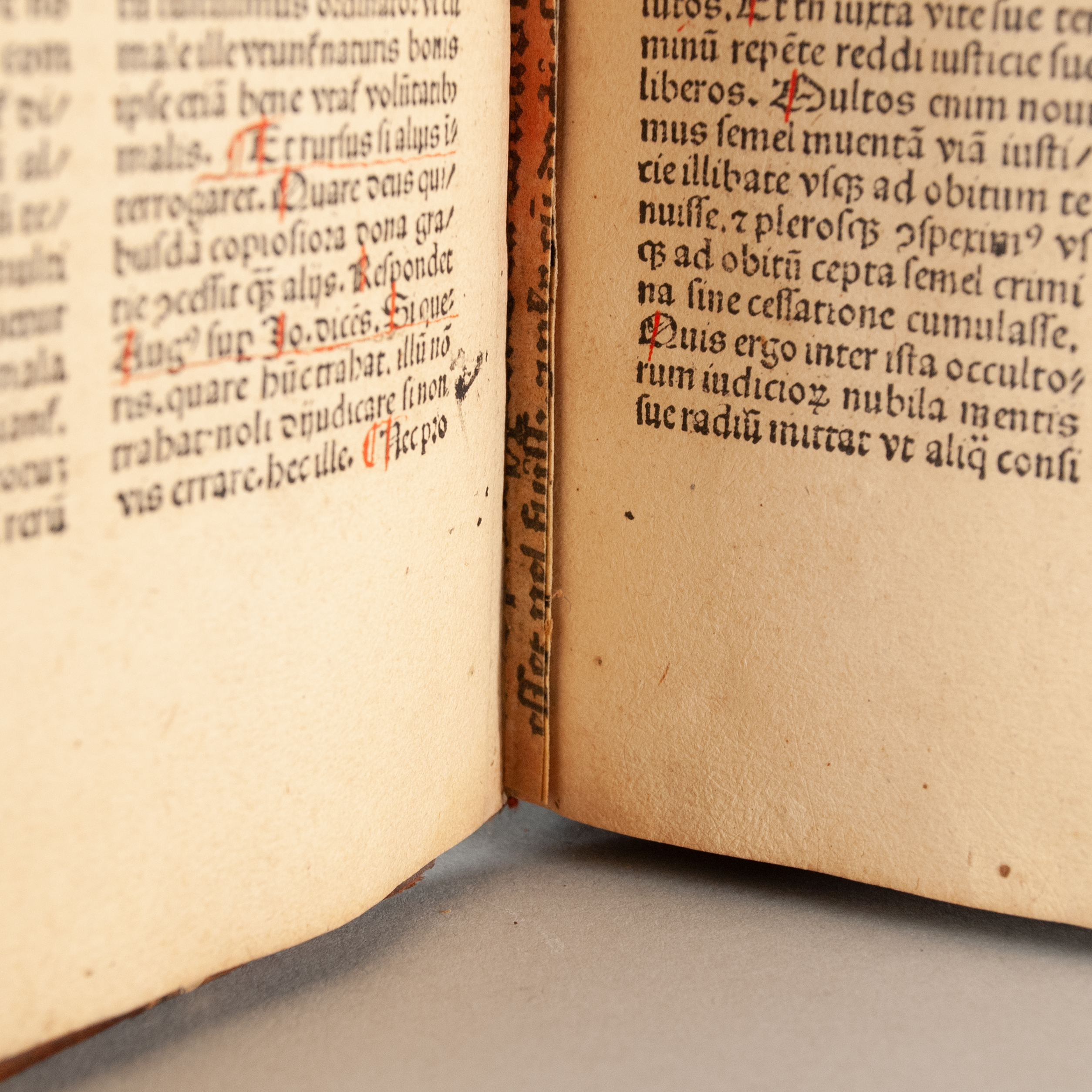
A fantastically rare example of the Ars Minor of Aelius Donatus from the earliest years of Mainz printing, being fragments of the ninth leaf of a 33-line edition printed on parchment with the type of the Gutenberg Bible. Sewn as a guard into the middle of the first gathering, between a4 and a5, is a single strip roughly two lines in height; and a second guard sewn in between P4 and P5—the first and last gatherings were commonly so guarded, as they bore the most stress during operation—this one bearing perhaps a little more than a single line of Donatus. Visible between sewing stations at the edges of the spine are eight trapezoidal pieces, representing two discrete halves of the spine’s comb lining—one running up the left side, another up the right, each extending roughly 1.25” onto the inside board (currently covered by paste-downs). Between these detectable elements, we estimate a combined surface area of roughly 170 square cm—perhaps a quarter to a third of a complete leaf.
Note that we have not disturbed any Donatus elements and we make no guarantees as to what lies beneath the binding remnants. (Schrödinger’s Donatus?) Still, we can see enough to reasonably map our fragments to the Paris leaf reproduced in Gottfried Zedler’s 1929 monograph: the right comb lining, which extends onto the inside front board, runs from the blank upper margin of the Donatus leaf down through line 5; the front guard runs from 5-7 (registration between recto and verso not quite perfect); the left comb lining from there through line 13, just barely touching line 14; then the rear guard through most of line 15. Together, these fragments come from nearly half the complete Donatus leaf. With portions trimmed to accommodate the comb linings, we have perhaps something approaching a third of the complete leaf.
Whether it’s a single line, a full leaf, a bifolium, whatever, the size of the fragment is not what moves us. As a vessel for one of the earliest items to come off Europe’s presses, as the most compelling artifact of early print culture we’ve ever handled—and probably ever will handle—this package is complete.
Offered by Patrick Olson Rare Books, booth 524.
A large collection of rare José Guadalupe Posada originals and restrikes -- religious figures, pamphlet covers, calaveras, vignette illustrations; news broadsides, songs; a little of everything.
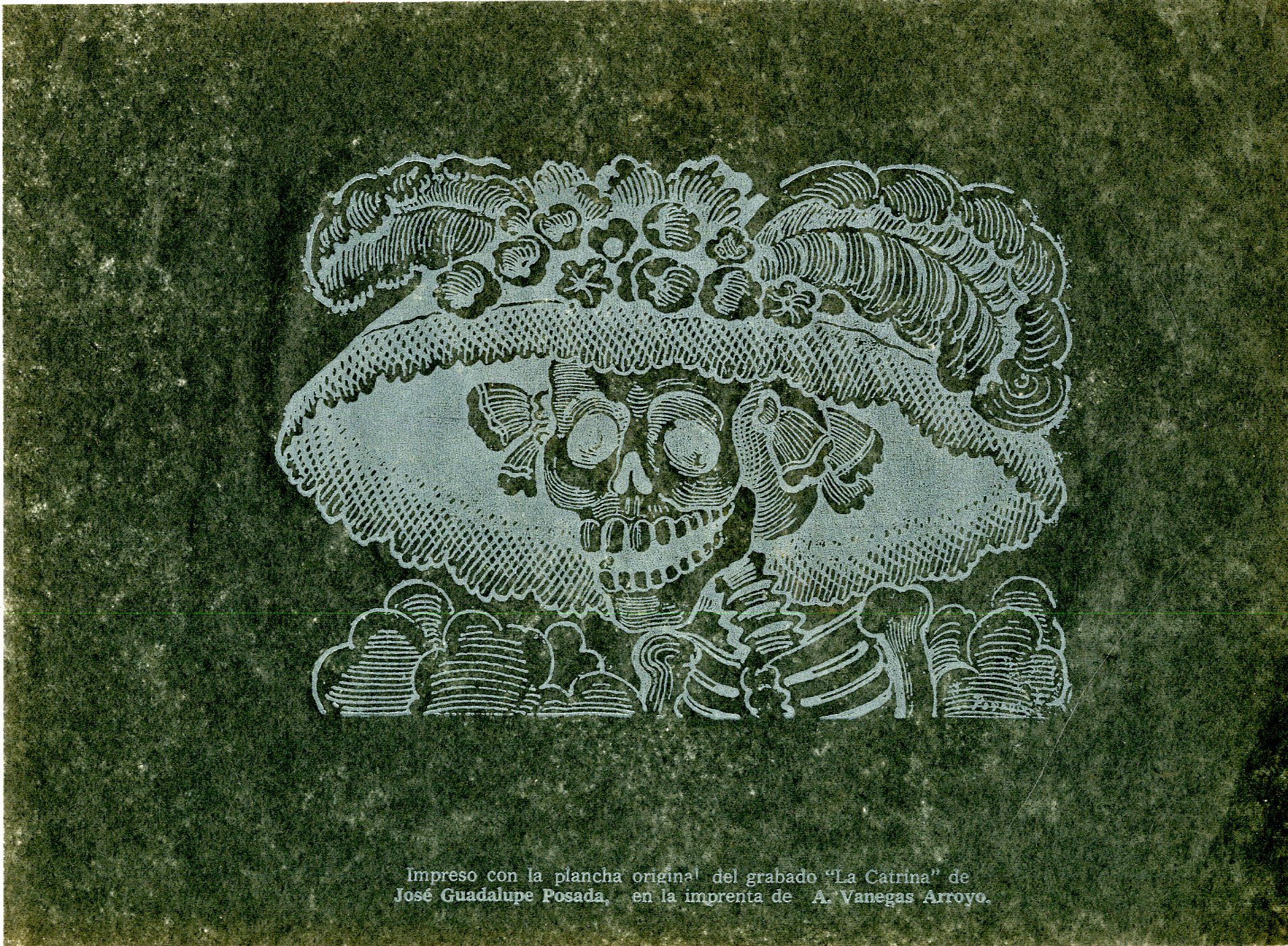
José Guadalupe Posada Aguilar (2 February 1852 – 20 January 1913) was a 19th century Mexican political lithographer who used relief printing to produce popular illustrations. His work has influenced numerous Latin American artists and cartoonists because of its satirical acuteness and social engagement. He used skulls, calaveras, and bones to convey political and cultural critiques.
Offered by Pazzo Books, booth 308.
Hieronymus Rodler.
Eyn Schon nutzlich buchlin und underweisung der kunst des Messens mit dem Zirckel Richtscheidt oder Linial. Zu nutz allen kunstliebhabern... auch allen denen so sich der kunst des Augenmess (Perspectiva zu latin gnant) zubebrauchen lust haben...
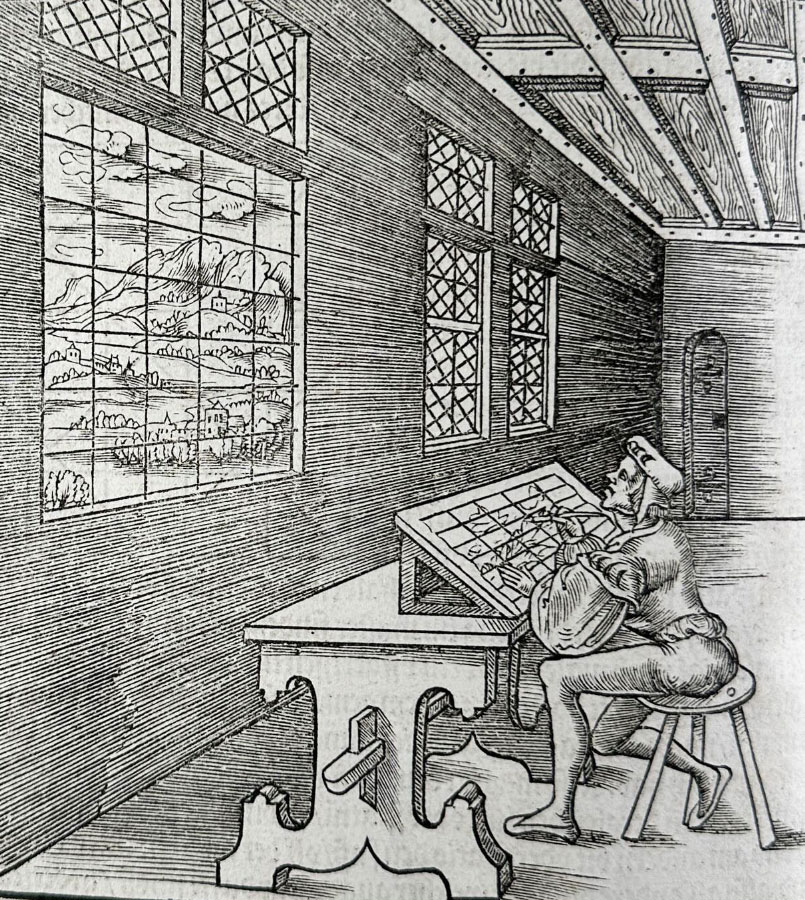
[Simmern: H. Rodler, uff S. Jacobs, abent [24 July] 1531]. The Edward Tufte copy, with his book label, formerly the copy of Lessing Rosenwald, and the Library of Congress (with their removal stamp).
First edition of Rodler's adaptation and simplification of the work of Dürer and Pelerin. It was privately printed on the press installed for Duke Johann II von Simmern (1492-1557), made for the benefit of painters, sculptors, goldsmiths, embroiderers, masons and carpenters. The woodcut illustration on the title shows some of these craftsmen at work. Rodler was one of the most celebrated publishers of illustrated books in Germany in the sixteenth century and he was the first to use the "Durer" Fraktur as a text type.
“This treatise, edited by Hieronymus Rodler, combined serious theoretical discussion and picture-book type practical example in a new way. The treatise is a revolt against specialist dogmatism, written in an easy vernacular and illustrated with a simple elegance and deftness that points towards the French school. Most of the full-page views were drawn from life in the grounds, halls and corridors of the castle and the title-page... presumably shows the workshop there, with a self-portrait of Duke Johann II at work” (Paul Breman after Wiebenson, III-B-2). The illustrations are dramatic in their use of one-point perspective and are often emphasized with red orthogonals. The depict various scenes: a student's desk set with calculation sheets and counters, a shelf holding bound volumes, a social scene with a man playing the viola da gamba, and an artist, working in a room with a gridded window, easily translating the viewed landscape onto his drawing board. Quite rare.
Offered by Riverrun Books & Manuscripts, booth 506.


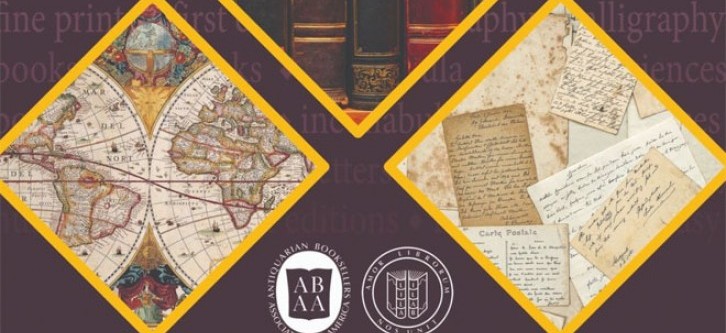
%2C%20a%20children%E2%80%99s%20book%20illustrator%2C%20began%20publishing%20children%E2%80%99s%20books%20and%20.jpg)
%20of%20nocturnal%20birds%20-%20Strigiformes%20(owls)%20and%20Caprimulgus%20(nightjars)%20by%20preeminent%20German%20botanist%20and%20ornithol.jpg)






.gif)


